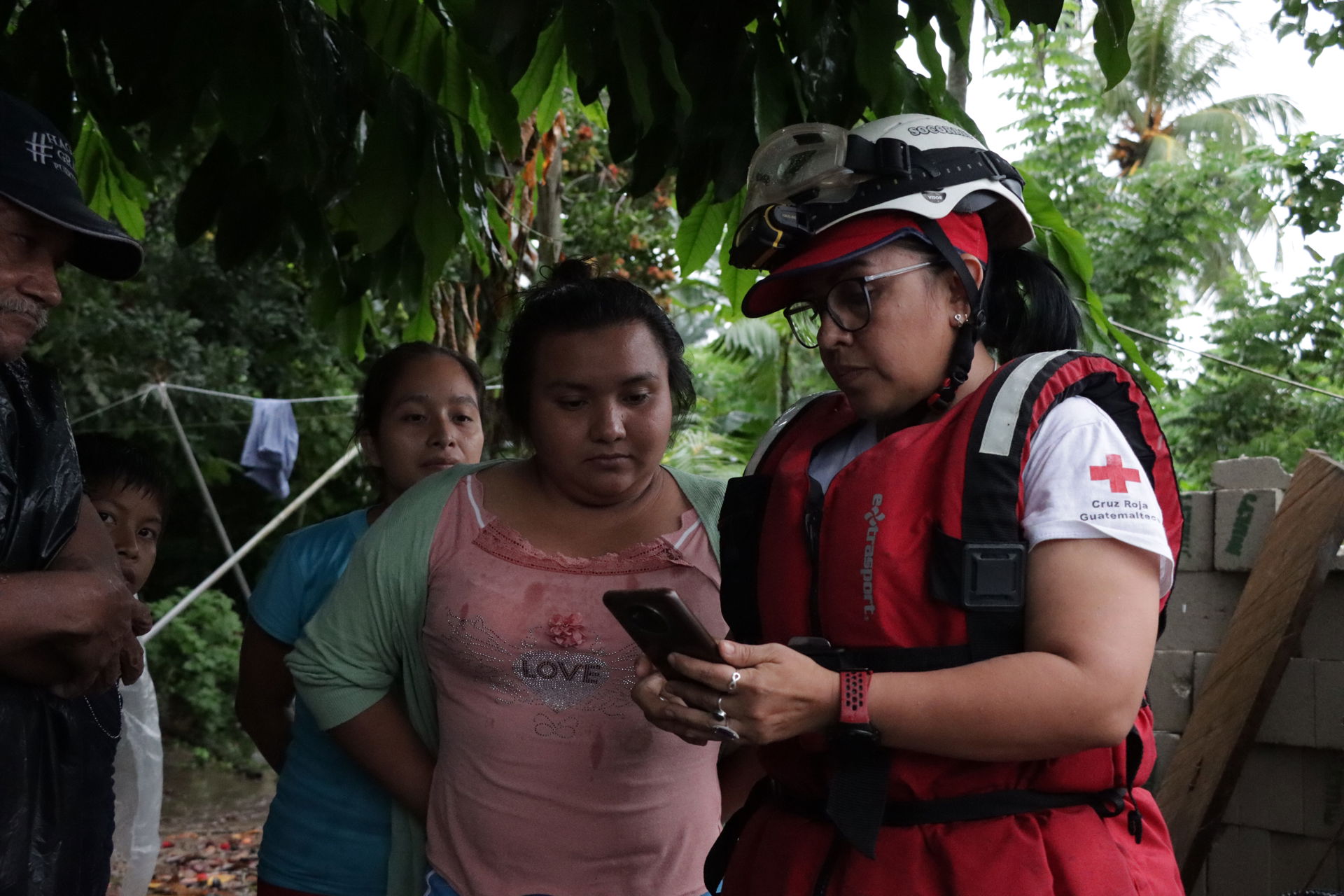The right time to prepare

How would you prepare for a flood, tropical cyclone or the next epidemic?
The COVID-19 pandemic and heavy thunderstorms in Finland have made people here think about how to keep up with their daily lives if the power goes out or they can’t go grocery shopping.
Preparing for disasters is a significant part of the Red Cross’s work both in Finland and around the world. By developing the readiness of communities to prepare for crises, the human suffering that the crises cause can be alleviated.
Advance preparation can save an immense number of human lives and livelihoods – and money as well. In the long run, preparing for disasters is both less expensive and more effective than repairing the damage afterwards.
The number of disasters is on the increase, caused by climate change, for example. Crises do not occur one at a time; instead, we need to prepare for increasing and simultaneous crises even better than before.
By donating to the Disaster Relief Fund, you are contributing to Red Cross work around the world through the Disaster Relief Fund. Your donation can help quickly and effectively where the need for aid is greatest at the time.
Through the Disaster Relief Fund, we can fund both rapid emergency aid and long-term work to support the preparedness of various Red Cross and Red Crescent societies, districts and communities.

Learning via simulation
Last year, over 37.5 million people benefited from the international Red Cross and Red Crescent projects on disaster risk preparedness.
The Finnish Red Cross strengthens the disaster readiness of communities and helps them prepare for the impact of climate change, such as crises resulting from extreme weather phenomena.
We use various disaster preparedness exercises and simulations when training the volunteers and employees of the local Red Cross and Red Crescent societies.
Whether it is a flood, earthquake or extreme weather phenomena, correct and timely action can reduce the number of lives and livelihoods lost.
Last year, our long-term development cooperation reached a total of 112,700 people who benefited from community-level preparedness. Now these people are better prepared, able to act effectively during a crisis and also able to recover from disasters faster.
In addition to this, 45 communities are using early warning systems. Early warning systems help the communities receive information about approaching extreme weather, act before the phenomena turn into disasters, and better protect themselves against risks.
Examples of the disaster preparedness work done by the Finnish Red Cross in 2022:
- In Malawi, a total of 67,730 people benefited from community-level preparedness measures. For example, we trained 270 people in using the early warning systems.
- In Zimbabwe, early warning systems and actions based on them were developed and tested in case of draught.
- In Kenya, Rwanda and Tanzania, a project based on early warning systems was launched. We cooperate with local Red Cross societies, local meteorological institutes and the Finnish Meteorological Institute.
- In Nepal, disaster readiness was strengthened through exercises and simulations and by updating the Red Cross disaster readiness plan. A total of 379 people from two different municipalities attended training on what to do in case of a disaster.

Clean water prevents epidemics
Preparing for epidemics requires long-term work. When it comes to preparedness, the Finnish Red Cross emphasises the availability of clean water and the importance of proper hygiene. This is a way to prevent epidemics, such as cholera.
People living in rural areas, urban slums, disaster-prone areas and low-income countries are the most vulnerable in the face of an epidemic. Clean water is not always available.
Everyone has the right to access clean water and to maintain good hygiene. Last year, over 42.4 million people benefited from the international Red Cross and Red Crescent projects on water and hygiene.
Last year, the Finnish Red Cross helped restore and build 50 water outlets through which more than 170,000 people can access clean water.
We also provide education to the communities. The members of a community are the first to notice the signs of a potential epidemic. Our volunteers play a key role here: for example, a trained volunteer of the Somali Red Crescent Society recognised and reported the first case of COVID-19 in the country. They helped the sick person to distance themselves from others to prevent the disease from spreading.
Examples of the epidemic preparedness work done by the Finnish Red Cross in 2022:
- In Kenya, over 70,600 people were vaccinated against COVID-19.
- In Somalia, more than 37,100 people were informed about COVID-19. Furthermore, more than 14,500 children were vaccinated against measles, tetanus, pertussis, hepatitis B and diphtheria.
- In Nepal, more than 4,760 people received information to prevent dengue fever.
- Preparedness for a cholera epidemic was supported in Malawi. A total of 777 trained volunteers made over 30,900 house calls during which they shared information about cholera, polio and malaria.
- In Burundi, epidemic preparedness against Ebola was supported, and the skills and functionality of the Burundi Red Cross volunteers were strengthened in case of crises.

As a donor, you are an important link in the chain of aid – aid would not be possible without donors. As a donor you are protecting the most vulnerable.